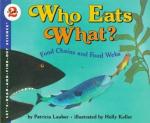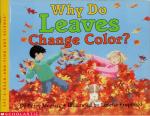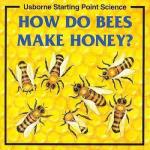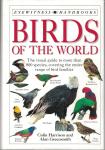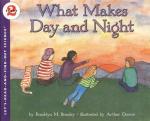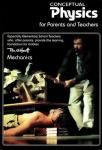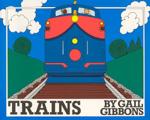Alicia Van Hecke
Who Eats What? Food Chains and Food Webs
This book explores the notion of various plants and animals that are linked together based on "who eats what." Children will learn about some simple food chains such as – leaf, caterpillar, wren and hawk. They also see how one plant or animal can belong to several food chains and that members or these related food chains (food webs) have a certain amount of dependence on each other. The text goes on to explain, through an example of a problem with over-hunted otters around the turn of the century, that when part of a food chain is disturbed, the other members will also be affected.
How Do Bees Make Honey?
A small, inexpensive book filled with pictures and lots of other information picture about bees and other insects. You'll learn how to tell bees apart from other insects, how bees live together in colonies and all about their beehives, how bees communicate with each other (my children have really enjoyed trying to re-enact the bee's dances) and of course how bees make honey. The one thing I didn't like is that the material is so disjointed because it jumps around between different kinds of insects.
Birds of the World
This is my favorite of the Dorling Kindersley Eyewitness Handbooks and I would venture to guess that it's probably the best bird handbook you can find. Hundreds of birds, from doves and swallows, to hawks and falcons and tropical birds are included with clear photos, a small map of where they can be found, an icon showing how large they are in comparison to the book, and other basic information about their habitat, migration, etc. Our family has used this guide extensively in identifying and learning more about the substantial variety of birds we find in our own backyard.
What Makes Day and Night?
The clearly written text is combined with simple, colorful pictures to make the concepts of day and night and the rotation of the earth in relation to the sun very understandable for both young children and their parents. : ) Included is a very simple hands-on "experiment" requiring only your child and a desk lamp. Some information about the moon is also covered. Like other books in this series, this book is a great solution for satisfying some of those "why" questions that young children constantly ask.
Conceptual Physics for Parents and Teachers, Book One: Mechanics
The Conceptual Physics series is designed to make scientific concepts more accessible to parents and teachers. The hope is that a greater understanding on our part will lead to more and better information for children at a young age so that they might begin to develop an interest in science and the wonders of the world around them. The author explains that the current emphasis in education seems to be on the process of how we came to understand certain things and that many students leave school without understanding basic concepts of gravity, motion, etc.
Trains
I really like it when authors of children's books remember that details of how things work are fascinating to children. Gail Gibbons is definitely one of those authors. Her book is filled with very simple illustrations and text about trains, but the various parts of the trains are labeled and the text explains things like how the trains link together and the differences between gondola cars, hopper cars, boxcars and tank cars.The back page contains a chart of signs and signals relating to trains. Appropriate for preschool or kindergarten age children.
Handbook of Nature Study
This is a very informative handbook on a large portion of nature, originally written for elementary school teachers. It covers wildlife, insects, farm animals, birds, fish, trees, flowers, weeds, vegetables, rocks, minerals, soil, climate, weather, magnets, the sun, moon, planets of our solar system and much more. According to the 1986 foreword, most of the living things described are common in the northeastern states of the U.S. but it covers a lot of material that would be helpful in other parts of the country as well.
The Merchant's Mark
The Merchant's Mark is a mystery set in England in 1493, against a rich historical background of a family involved in the wool industry. The author weaves much detail about the wool and cloth trades into the story. Many traditions, celebrations and religious practices are also included, giving the reader a very nice picture of life at that time - particularly their strong Catholic culture. This might be a good book to read alongside a study of Christopher Columbus.

